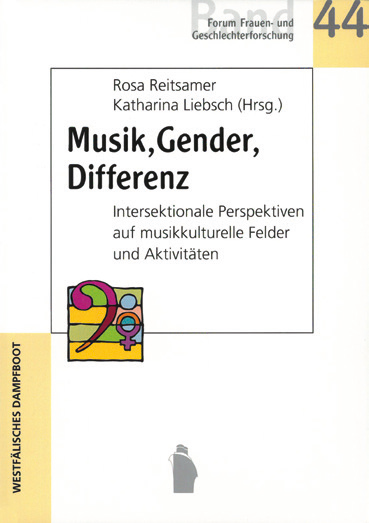Rosa Reitsamer and Katharina Liebsch (eds.), Musik, Gender, Differenz. Intersektionale Perspektiven auf musikkulturelle Felder und Aktivitäten, Münster: Westfälisches Dampfboot 2015 (Forum Frauen- und Geschlechterforschung 44), 282 pp.
The present collected volume, which arose from a 2013 conference at the mdw, deals with questions from the area of music and gender that tie into social history and sociology in the broadest sense. Its 15 written contributions cover diverse thematic and historical material, from castratos in the early modern period to the share of woman musicians in Austrian orchestras. But there are clear emphases on popular music phenomena of the 20th and 21st centuries, ranging from 1920s American jazz to present-day male rappers in the Viennese district of Ottakring.

The perspectives are diverse, and the look at the gender stereotypes that continue to be affirmed and reproduced in large parts of the pop music mainstream is occasionally sobering. The (self-)sexualisation of stringed instrument-playing divas in the crossover field featured in the contribution by Alenka Barber-Kersovan and the feminine self-optimisation in books for electric guitar learners in the essay by Sarah Schauberger reveal nearly insurmountable market mechanisms oriented toward conventional notions of masculinity and femininity. Less commercially oriented genres function a bit differently, but there, too, the results are ambivalent: Martin Winter, for example, perceives a rejection of “tough” masculinity in punk rock but also a subliminal male gendering that is distinct from other musical genres. Similar findings come from Nadine Sanitter, according to whom the media discourse on the indie genre constructs a hierarchical gender order.
The term “difference”, positioned prominently in this volume’s title, plays less of a role in the essays on a theoretical level than do differing conceptions of masculinities and femininities—with many of the contributions on masculinity referring to Raewyn Connell’s idea of “hegemonic masculinities”, while the contributions on femininity often refer to Angela McRobbie’s concept of “top girls”. In the binary quality of these approaches to research, one could perhaps also make out an interesting “difference”. And in this light, the contributions provide insights not only individually, but also in terms of the overall impression they leave, which reflects the current state of the ongoing debates on the theme of music and gender.
An abbreviated version of this review appeared in Weiberdiwan (www.weiberdiwan.at).
Please note:
Further current publications can be found at www.mdw.ac.at/wissenschaft/publikationen

